Our family was recently able to take a bucket list multigenerational vacation to Yellowstone National Park. This trip was truly decades in the making. My mother spent a summer when she was in college working in the park and had always dreamed of returning with her kids and grandkids.
After years of talking and dreaming, we finally we set off for a visit to America's original national park - with a party of 10! Our travel party included my family of four (kids ages 15 and 10), my sister's family of four (kids ages 10 and 5), and my parents. The family spanned an age range more than 70 years wide.
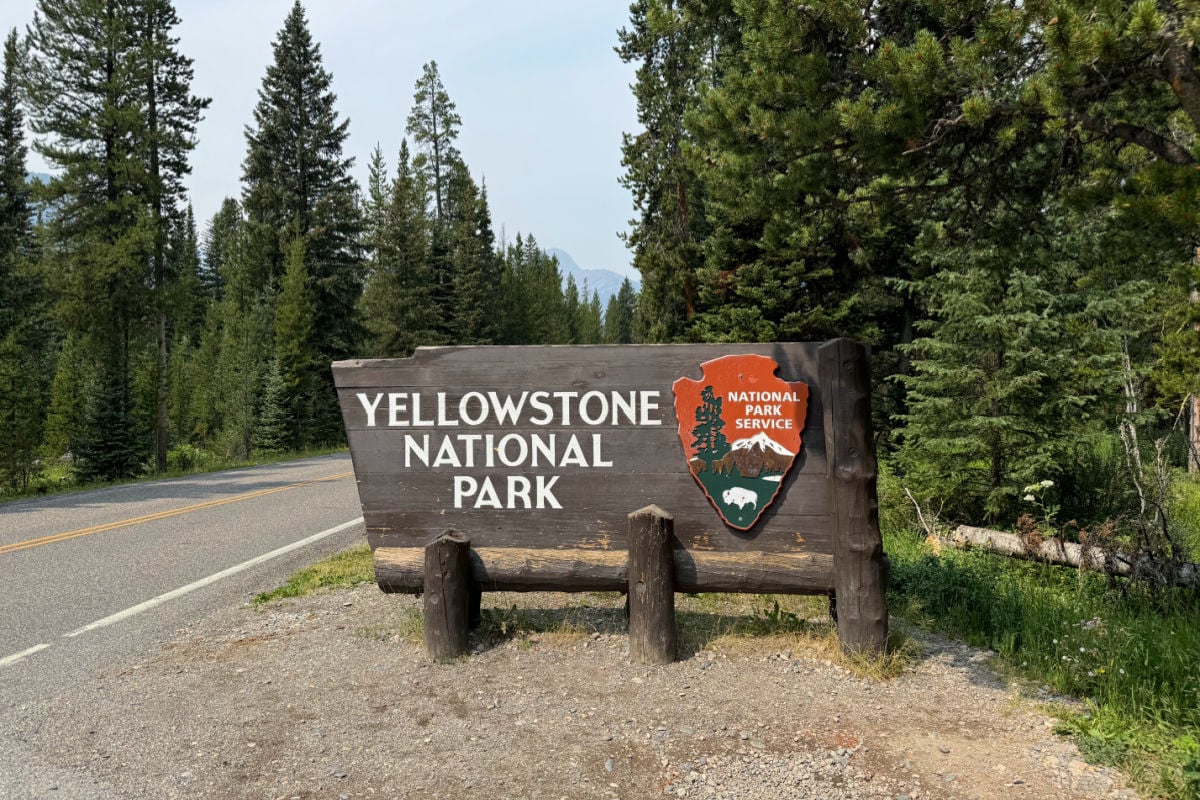
Our family visits national parks regularly and my husband worked in another major national park (Yosemite). But each national park is unique, so we knew we had quite a learning curve to get prepared for a park as large and varied as Yellowstone. We ultimately had a very successful trip and did a lot of things right, but the trip was not without the usual bumps in the road and occasional misstep.
Related: Tips for Beginners to National Park Trips
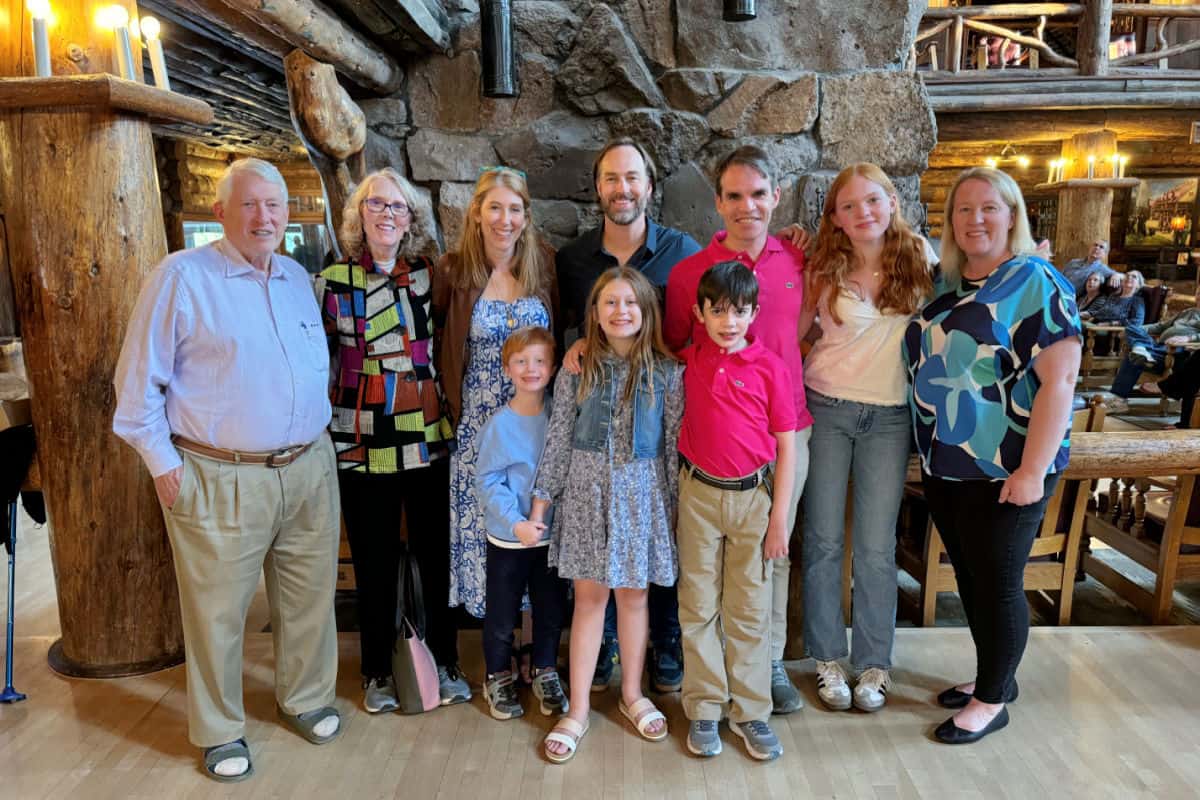
If you are headed to Yellowstone for the first time with your family, here are 15 tips we picked up in our Yellowstone travels that should help you too. All the major sites within the park, lodging choices, and closest airports mentioned in this post appear on the map below to assist in your own step-by-step planning.
1. Investigate airport options & lodging at the same time.
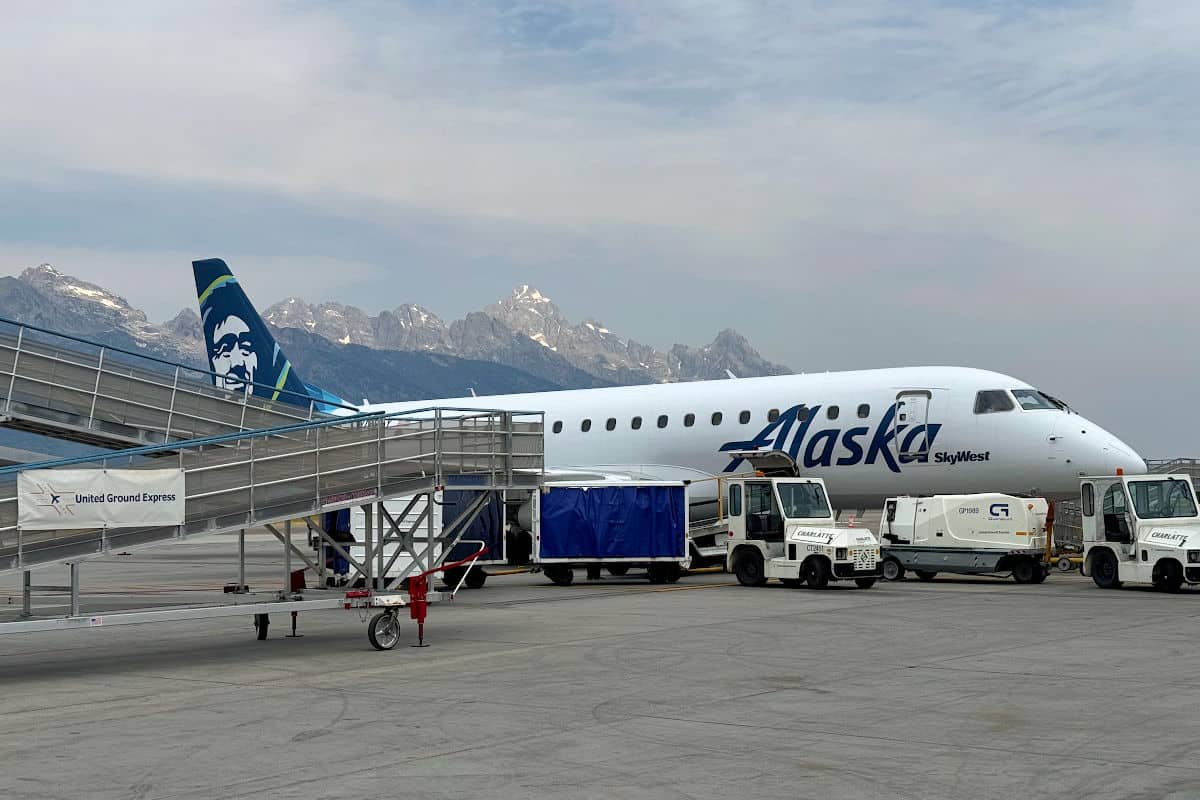
Yellowstone is an enormous national park in what feels like the middle of nowhere, which means there are several gateways to its various parts. If you are flying into the area, you have multiple airport choices to consider. Where you fly into will likely dictate where you will stay - and vice versa.
For that reason, it's very important to look into your airport choices and your lodging options at the same time. Coordinating both together could literally save you hours of driving on multiple days of your trip.
Airport options that Yellowstone travelers most commonly use are:
- Jackson Hole Airport (JAC): Just north of Jackson, WY. Served by Alaska, American, Delta, & United (and seasonally by Sun Country). Closest to Yellowstone's south entrance. (Official website here.)
- Bozeman Yellowstone International Airport (BOZ): In Bozeman, Montana. Served by Served by Alaska, Allegiant, American, Delta, JetBlue, Southwest, Sun Country, & United. Closest to the north entrance. (Official website here.)
- Yellowstone Airport (WYS): In West Yellowstone, Montana. Served by Delta and United. Closest to the west entrance. (Official website here.)
- Yellowstone Regional Airport (YRA): In Cody, WY. Served by United only. Closest to the east entrance. (Official website here.)
For most travelers, the first two airports (JAC or BOZ) are going to be the most realistic choices as they have substantially more service than the others.
We quickly settled on using JAC, as we determined the airport had non-stop summer flights from both places our family members were coming from (the San Francisco Bay Area on Alaska and Charlotte, NC on American).
We also most wanted to stay in the Old Faithful area where my mother once worked. Since it is in the southern part of the park, the logistics lined up. This plan also meant that we could spend some of the week in the Jackson Hole area too.
2. Book in-park lodging early - but snag last minute cancellations.
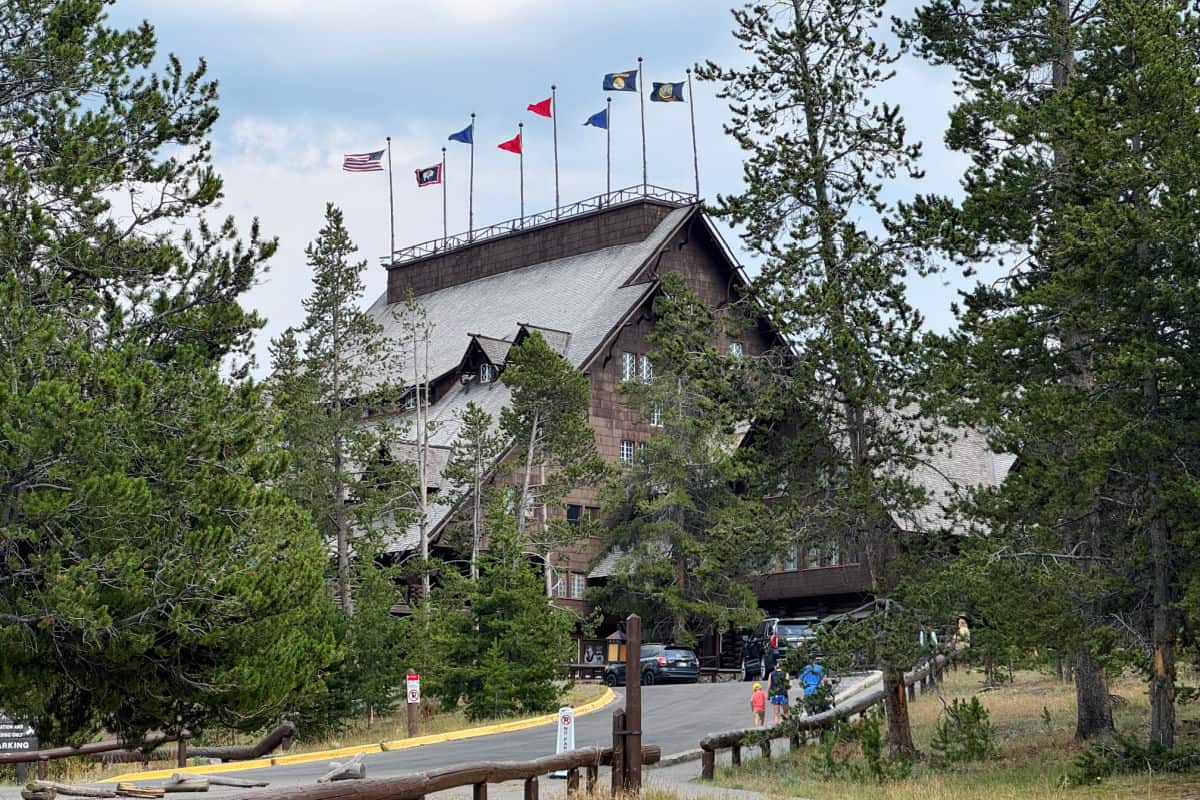
Because the park is so enormous, it's extremely helpful to stay within Yellowstone's boundaries so you can be closer to the various attractions. Although plenty of people stay outside of the park and day trip in, that can mean multiple hours on the road daily.
All of the in-park lodging is run by the park's official concessioner Xanterra, which runs lodging at multiple national parks. Major hotels and cabins within Yellowstone available to book through Xanterra include:
- Canyon Lodge & Cabins: Hotel-style buildings with guest rooms and rustic cabins.
- Grant Village Lodge: Hotel-style buildings with guest rooms.
- Lake Hotel and Cabins: Hotel-style buildings with guest rooms and cabins.
- Lake Lodge Cabins: Cabins.
- Mammoth Hot Springs Hotel and Cabins: Hotel-style building with guest rooms and cabins.
- Old Faithful Inn: Hotel-style buildings with guest rooms.
- Old Faithful Lodge: Cabins.
- Old Faithful Snow Lodge: Hotel-style building with guest rooms and cabins.
- Roosevelt Lodge: Cabins.
Lodging within the park is limited and far exceeds demand. If you want to snag it, you have to plan early. We booked our reservations at the super-popular Old Faithful Inn (pictured above) more than a full year in advance - on July 13, 2023 for a stay July 27-31, 2024.
Related: Iconic national parks lodges to add to your travel bucket list
Reservations usually open about 13 months in advance. On the 5th of the month, the official concessioner releases the entirety of the same month the following year (so all July 2027 reservations will open July 5, 2026).
If you miss that early window, however, all hope is not lost. You just have to be persistent. As you can imagine, plans change often when travelers are planning more than a year in advance, and cancellations happen all the time. If you check often, you can usually find availability. The cancellation deadline for hotel reservations is 7 days in advance, so checking the week prior to that date often yields the most success.

3. Plan on at least 3-4 days in the park.
Lots of national parks can be reasonably sampled or even tackled in a day or two. But Yellowstone is not one of those parks. I will keep harping on this point throughout this post, but the park is enormous. You likely won't be able to appreciate the enormity until you are within it experiencing the wide open spaces for yourself.
That means you'll need a fair amount of time for just an introductory sampling of the park's offerings, and much more time if you plan a deeper dive.
Our family spent four nights within the park on our trip, and we felt like we were able to hit the major highlights of most interest within that time. But we were only able to do that by planning pretty full days the entire time. I'd recommend that other travelers plan a 3-4 day minimum as well.
4. Focus on one area of the park per day to minimize long driving distances.

Given Yellowstone's size, you'll spend a fair amount of time in the car, but you want to minimize that as much as possible. The best way to do that is to focus on one region of the park at a time.
There are multiple distinct areas within the park (so much so that it really feels like multiple national parks in one!). Plan on up to a day to focus on each. Those include:
- Geysers and other geothermal features closer to the park's southern entrance (Grand Prismatic (pictured above), Old Faithful, Fountain Paint Pots, Norris Geyser Basin)
- Mammoth Hot Springs at the north end of the park
- Tower-Roosevelt, including wildlife watching in the Lamar Valley, in the northeast side of the park
- Lake Yellowstone & the Canyon Area in the more central area of the park (Upper and Lower Yellowstone River Falls)
5. Consider combining a Yellowstone trip with another nearby national park.
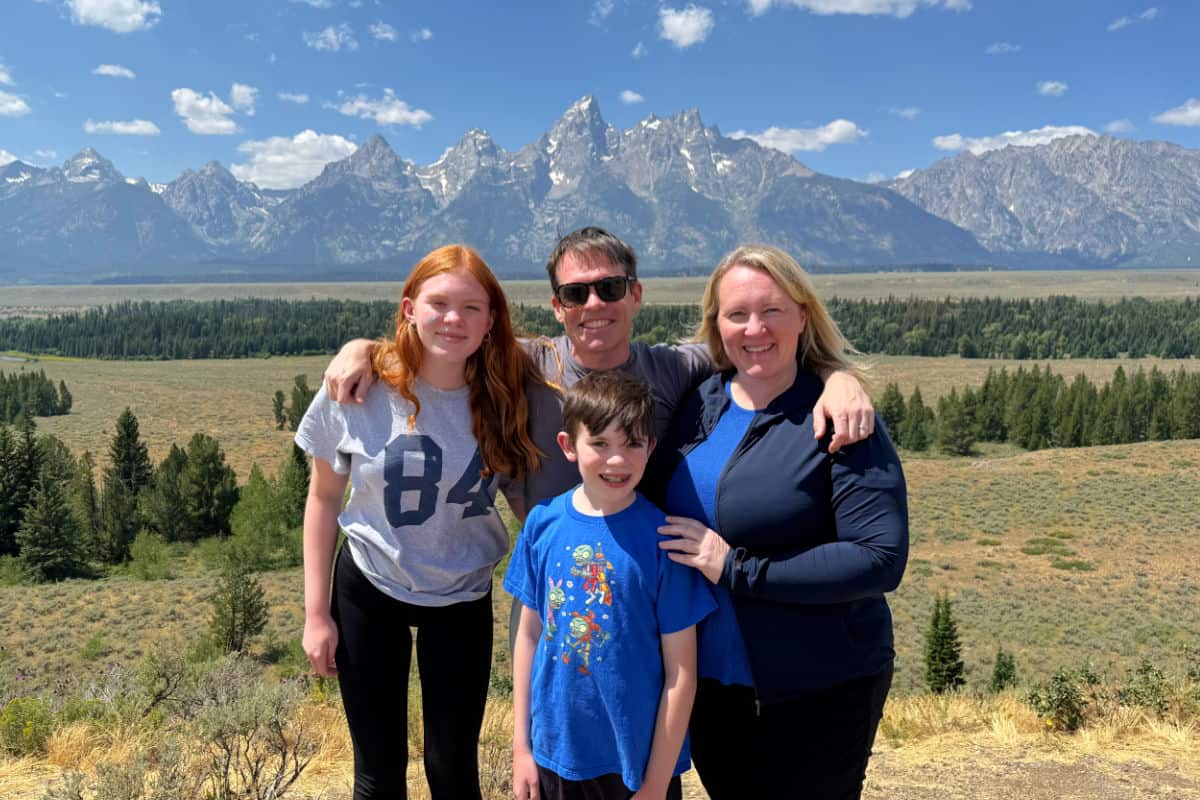
Since travel time is significant both to and within Yellowstone for most visitors, it's best to make a trip a full week, which is what our family did. If you have this kind of time to spare, a full week is ideal, which gives you time to visit one or two other national parks or nearby attractions in the same region.
The most common national park combinations with Yellowstone are either Grand Teton National Park or Glacier National Park.
Grand Teton: Grand Teton is the closest other national park to Yellowstone - it's a less than 2 hour drive from Old Faithful in Yellowstone to Jenny Lake in Grand Teton. If you plan to explore Grand Teton, flying into JAC is your best bet. You can easily stay in the Jackson area and use it as a home base from which to explore this park. Our family day tripped into the park from Jackson on some days while spending additional time in the Jackson area. A highlight for us in the park was taking a boat ride across Jenny Lake where we hiked an easy 1.3 mile trail to Hidden Falls.
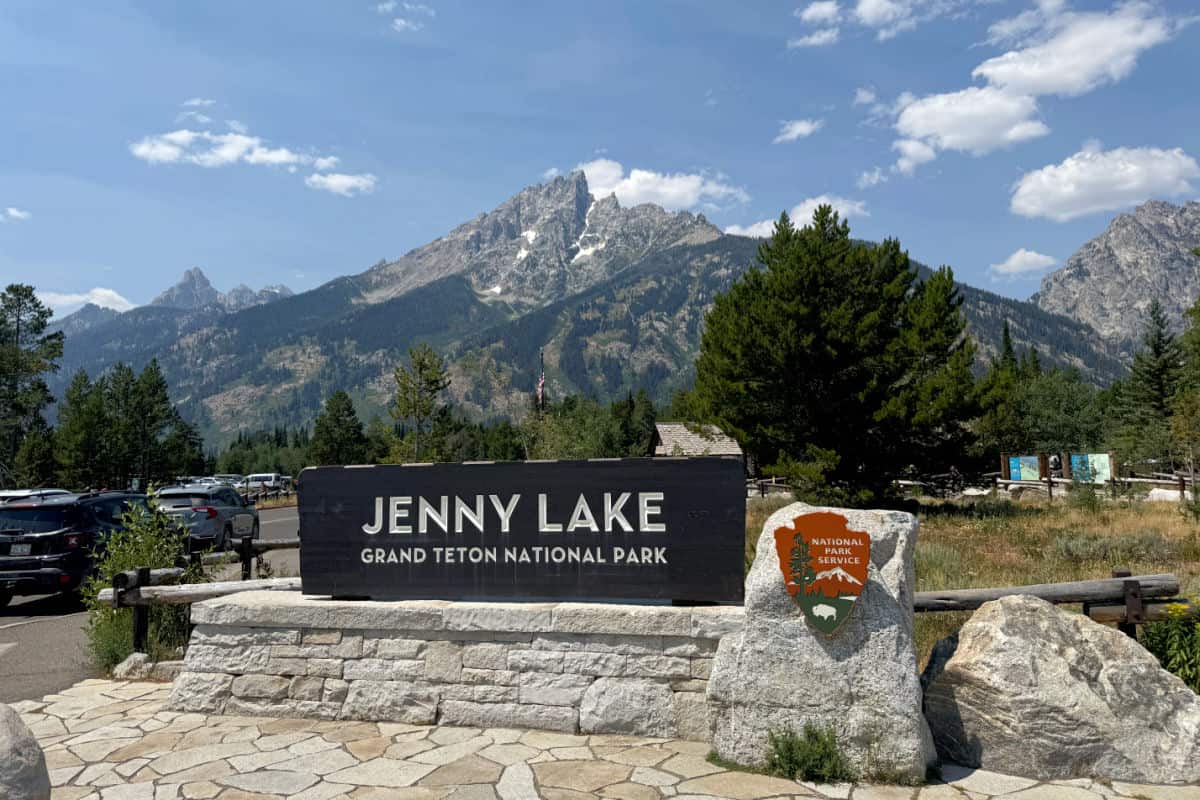
Glacier: If you plan to combine a Yellowstone trip with one to Glacier National Park, you'll need to do some more substantial driving - about 6-8 hours depending on where you are starting and ending within each park. BOZ is the more convenient airport choice for this trip, but one of the airports closer to Glacier may make sense as well depending on your overall plans.
6. Expect to be off the grid. Really.
Repeat after me: there is no cell service or WiFi in most (and sometimes all) of Yellowstone. Really? Really! Yellowstone is visited by millions of people every year, so surely you can get some cell service or a little WiFi, right? Um, no.
There are plenty of national parks where you will get service in a lot of places even when the printed guides warn that you won't. Yellowstone just isn't one of those places. Believe the warnings. You have to be prepared for the very likely possibly of being completely disconnected from devices for days at a time. If you have the kind of job where you need to check in, you might not be able to. Prepare accordingly.
My husband and I have T-Mobile and only got the occasional ping from civilization when we were on the east side of the park. We otherwise got nothing, even in the very well-traveled areas around Old Faithful and Mammoth Hot Springs. My parents and sister with AT&T had a little more luck just around Old Faithful, as there is a single AT&T cell tower there. But that was truly it.
Old Faithful Lodge (where the restaurant is, not the Inn which is where we stayed) ostensibly has WiFi that we walked over to try to use a few times. It was either impossible to connect to for days at a time or was so slow as to be unusable.
7. Have an itinerary in advance.

Because you'll likely be off the grid while within the park, that means you need to do your research and gather the resources you need to tour the park BEFORE you enter. Last minute procrastinators beware!
If there is ever a time to pack a physical guidebook in your luggage on a trip in the now-digital age we live in, this is it. At the very least, screenshot or download digital maps and materials to your phone before you enter the park.
Before our trip, I wisely downloaded the Yellowstone travel guides from my good friend and fellow family travel blogger Bryanna Royal at Crazy Family Adventure. Bryanna's family RVed around the USA for several years, and she has spent more time in Yellowstone than anyone I know.
Her guides were a life-saver to walking us through the step-by-step logistics of a perfectly executed Yellowstone day. We used her 1-day guide for our first full day in the park exploring around the Old Faithful and Grand Prismatic areas. (Check out her Yellowstone itineraries here.)
8. Stop in Yellowstone's visitor centers.

While it's important to come prepared yourself, all hope is not lost for getting information within the park as well. There are multiple visitor centers staffed by experienced rangers all over the park who will happily give you advice on the best sights to see, trail conditions, and other tips.
In fact, I highly recommend stopping at these visitors centers even if you are fully prepared with an itinerary. You'll get much more in-the-moment information to improve your trip.
For example, the Old Faithful Visitor's Center has a chart of the likely geyser eruption times of the day. I was able to time one of my hikes so I was able to see one of the geysers that spouts impressively but infrequently - all thanks to this information.
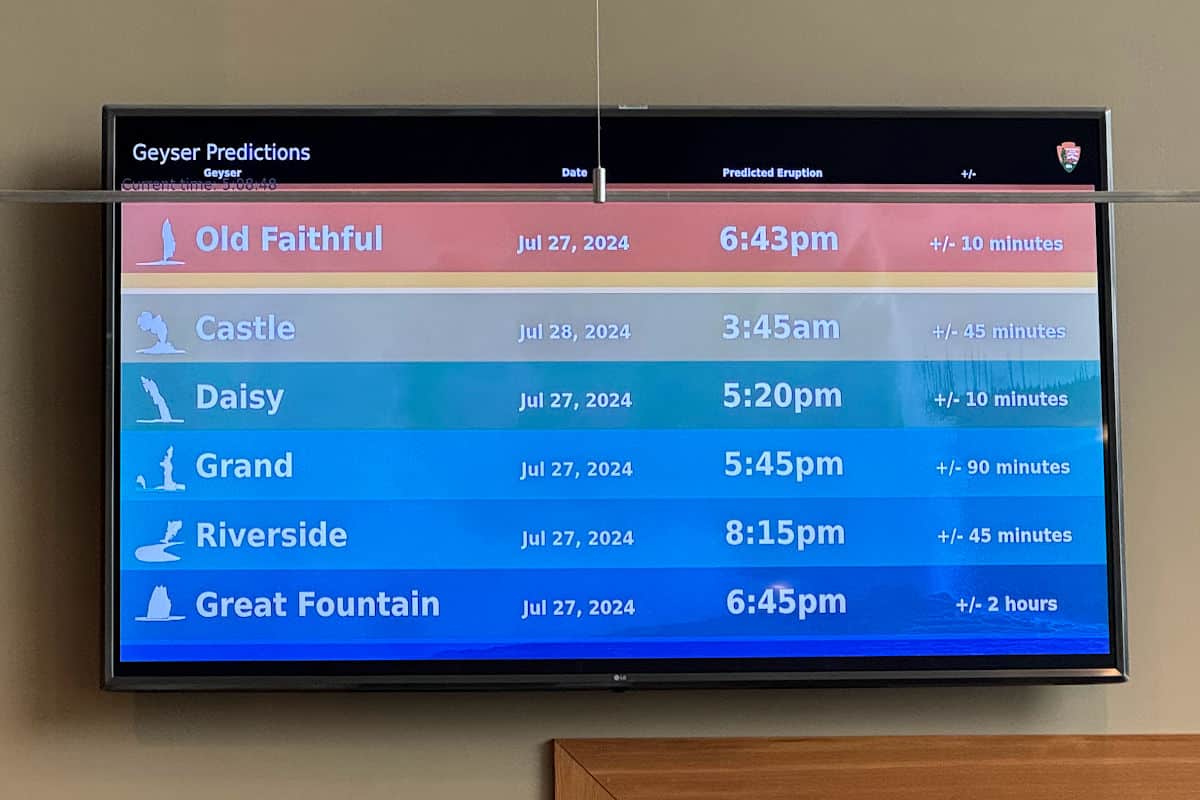
And if you have younger kids, visitor centers are where you can pick up a Junior Ranger booklet. Our kids have really enjoyed doing these over the years. Most are targeted for age 5-12 year olds. Have your kids turn in the completed booklet before you leave the park (they'll get a nice wooden collectible ranger badge and be sworn in as a junior ranger).
Related: Tips for Visiting National Parks with 4th graders
The visitors centers also often have ranger-guided programming and talks where you can learn more about the park, so check the schedule for those as well.
Visitors centers within the park include (colored in green on the embedded map above):
- Old Faithful Visitor Education Center
- Albright Visitor Center
- Canyon Visitor Education Center
- Fishing Bridge Visitor Center
- Grant Visitor Center
9. Start early to maximize wildlife spotting and minimize traffic.
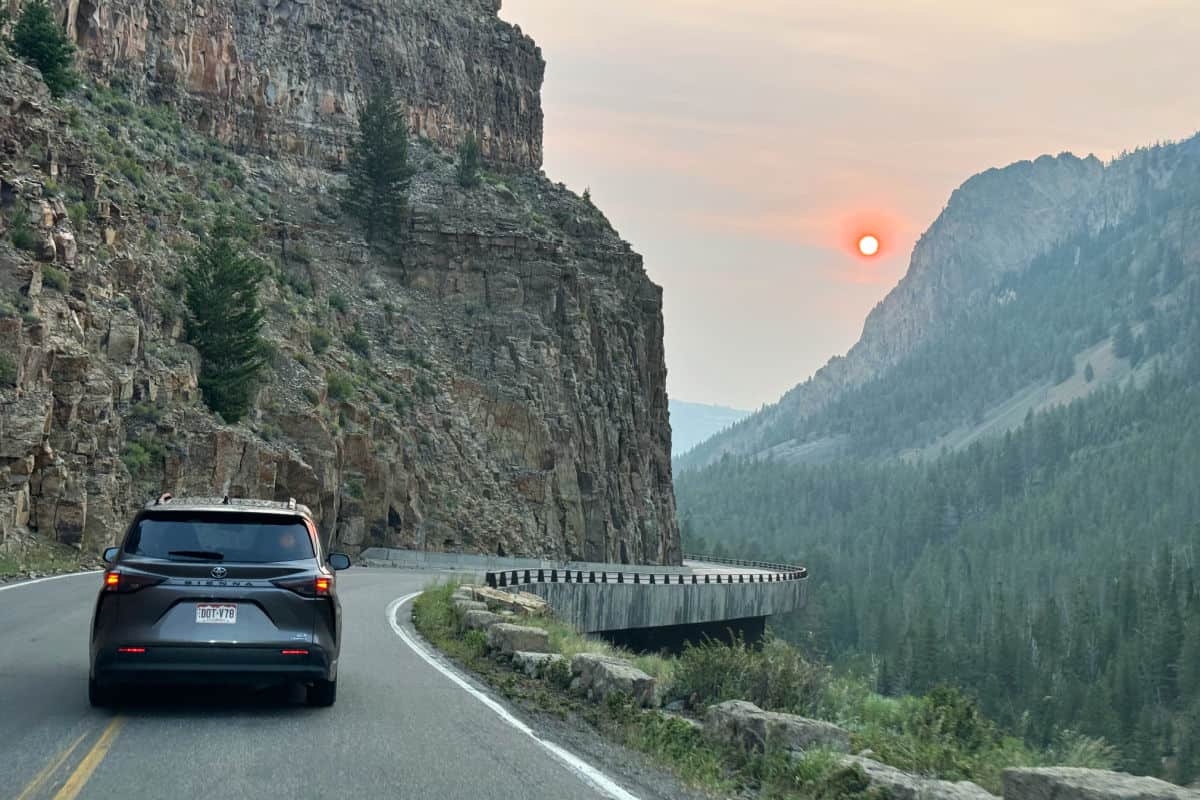
It's hard to wake up early on vacation, but the early bird definitely gets the worm (bison?) in Yellowstone. Wildlife are on their own schedule. The best way to see many creatures is at the crack of dawn - like it or not.
But there is another reason to start early. Yellowstone gets very crowded during the limited times of year it isn't covered in snow, so the best way to beat other people to everything is by starting before they do. If you are staying within the park, it's incredibly valuable to start your day before the bulk of the day trippers arrive into the park's boundaries. And if you are staying outside of the park, it's helpful to start earlier than others in the same boat to avoid long lines at the park's entrances.
We started one of our mornings (the day we focused most on wildlife watching) by hitting the road at 5am and making our way to Mammoth Hot Springs for a 7am tour meet up. We were a little sleep deprived, but we were able to see an impressive number of animals that morning.
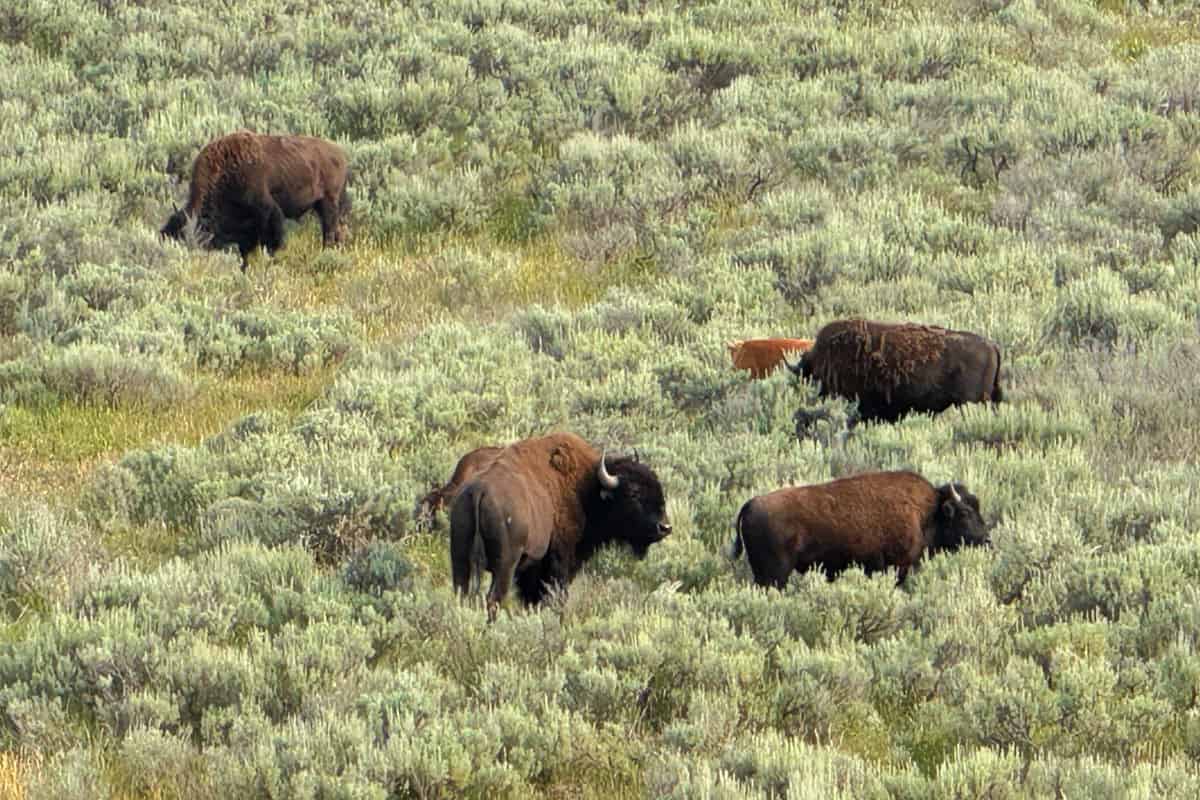
And by the time we were done with our time in Yellowstone, we had personally seen all five of the animals the park is best known for (bear, moose, bison, elk, and wolves) - a rare feat!
10. Prepare for parking challenges.
The high traffic volume (and the occasional stubborn bison) can certainly slow down things on the road, but the real choke point is what happens when all those cars need to stop and park. Parking demand far exceeds supply at the vast majority of the popular pull-outs and trailheads within Yellowstone.
You may have to circle for 30 minutes or more to get a spot at some places some times of day. Grand Prismatic Spring, for example, in the middle of the day is notoriously long. At times, lines for parking back out onto the main road. You may have to walk long distances from overflow parking lots farther out on the road as well.
One member of our party has a disability parking placard and even that wasn't a guarantee of an easy time. At some places, like Norris Geyser Basin, the line to reach the lot was so long that we had to wait in it for quite a while before we could get close to any drop off spots or handicapped spaces.
11. Hire a guide to help with wildlife spotting.

While a lot of national parks can be done cheaply because you can truly DIY most activities, there is one place where you might want to consider splurging in Yellowstone - on an experienced guide. A guide who really knows the park can help take you to the places at the right hours where you can see the animals in the park best. They can also help navigate challenging parking and traffic situations.
With a large family group, we hired a private guide to take us in a single larger van on two of our four days within the park. The best ones are pricey, but it turned out to be money well spent for us on this trip of a lifetime!
After a lot of research, I settled on hiring Yellowstone Guidelines (not sponsored - just an authentic recommendation). We were matched with Phil who showed us some of the more secret spots the park had to offer along with all the highlights. The experienced professional guides talk regularly to one another, sometimes in real time, so they have the inside scoop on where animals are active, and that really paid off for us. We all appreciated Phil's deep knowledge and reverence for Yellowstone's natural wonders. His expertise was one of the major reasons our trip was such a success.
12. Prepare for elevation and sun.
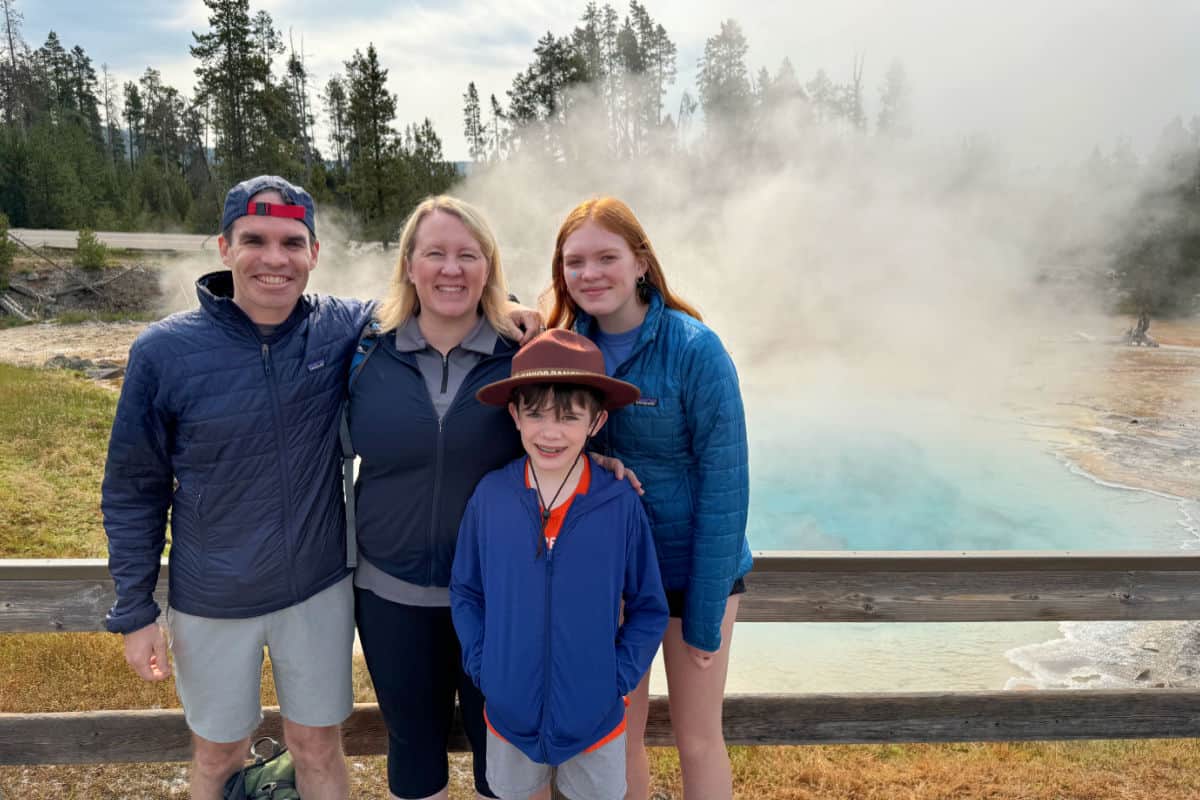
A lot of visitors may not realize it because of the visuals of wide open plains in summer months, but Yellowstone is at a pretty significant elevation. Old Faithful is at 7,349 feet which is above the elevation of the base levels of many ski resorts!
The elevation means an increased risk of everything from dehydration and sun exposure. I promise you will definitely feel this most on hikes if you live at sea level like my family does. It's a lot harder to catch your breath when you exert yourself!
I recommend packing way more water than you think you might need, as you'll need more of it at elevation. Put on sunscreen, pack hats, and wear sun protective clothing.
Important Yellowstone Tip:
Facilities are few and far between within the park. When you have access to amenities like water refill stations and bathrooms, use them - because you don't know when the next one will be available!
13. BYO food & plan to picnic.
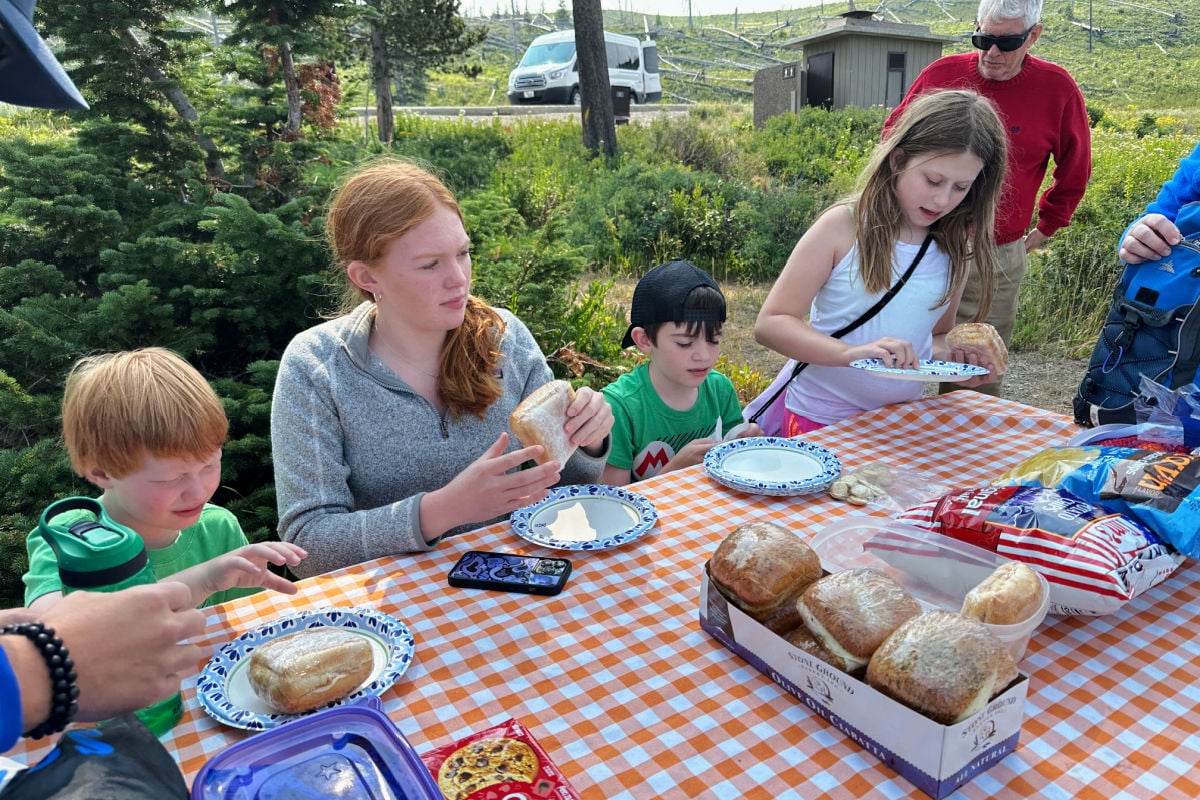
Although Yellowstone has lots of facilities in multiple places throughout the park, they are much more spread out than you might expect. There's no pulling over for even a pre-packaged sandwich or bag of chips, except in very limited places.
I highly recommend being prepared with food for at least lunch and all snacks before you leave your place of lodging in the morning. Pack shelf-stable snacks with carbs and protein like granola or energy bars, trail mix, chips, meat sticks, or peanut butter crackers. Most grab and go sandwiches can be safely carried unrefrigerated from the early morning hours with you in time to save to eat for lunch.
One of the highlights of being in the great outdoors is finding a fun place to picnic. We ate sandwiches with our guide one day on the banks of Yellowstone Lake and the views made the experience quite a highlight.
14. Pack and dress for weather contingencies.
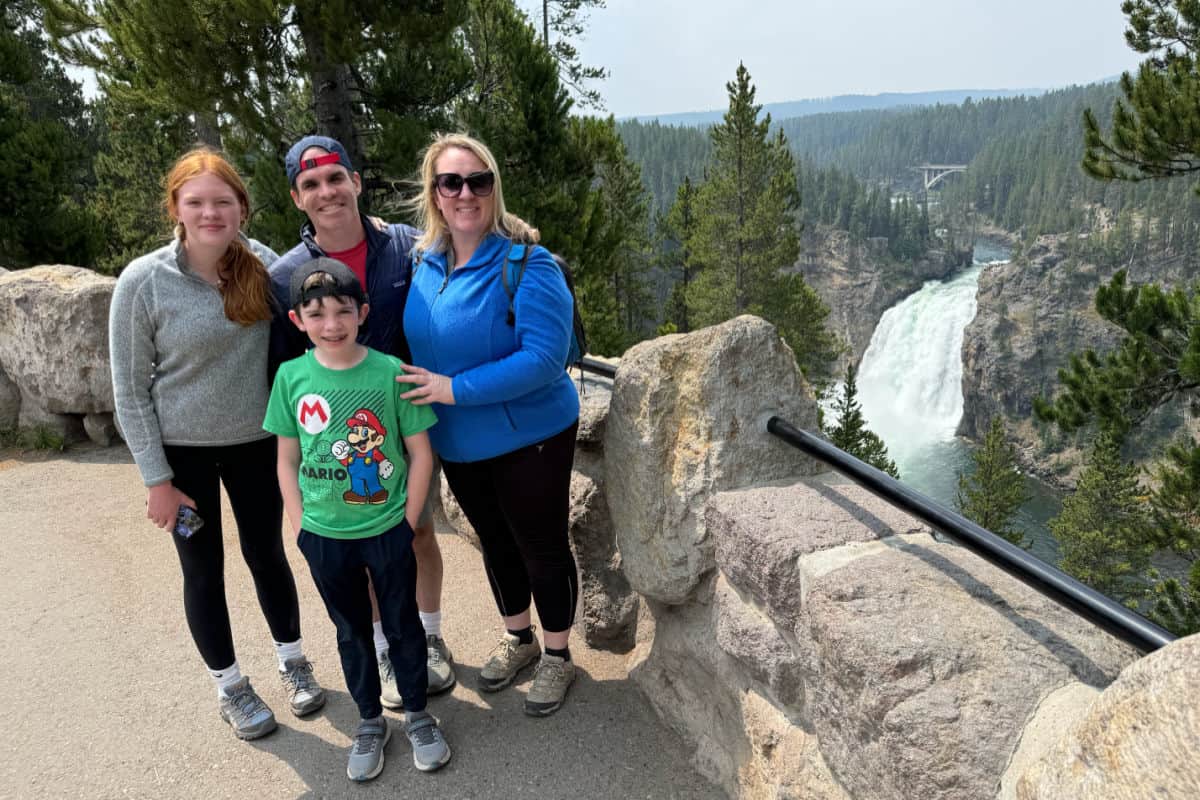
Most visitors to Yellowstone come in the summer months, but that doesn't mean the weather isn't a factor to consider. Because of the high elevation, the snow may linger in some spots in the park well into the early summer. June visitors may especially need to have warm jackets and lots of layers. July and August are warmer, but still can get chilly depending on time of day and elevation.
We visited at the very end of July and found we very much needed to layer to be comfortable. I found I was perfectly dressed wearing leggings and a short sleeved quick dry shirt most days, with a light jacket or zip fleece over it for the mornings and evenings.
Rain and thunderstorms are very much a possibility as well. Pack emergency ponchos for everyone in your day pack daily. Consider packing quality rain gear and other quick dry clothing if precipitation is in the immediate forecast.
15. Heed the warnings & leave no trace.

Last and most certainly not least, take Yellowstone seriously and treat it with respect. It's a national park - not a theme park! So many visitors don't have real experience with the great outdoors and come to national parks putting themselves, others, and the park itself in danger.
Don't go on trails you aren't prepared for, and don't go without the gear, supplies, and water you might need. Don't leave litter behind. Don't go off-trail or ignore posted warnings (the ground in Yellowstone can literally crumble right underneath you!).
Keep your distance from wildlife. Bison and bears can and do attack, especially when they feel threatened or cornered. The videos of misbehaving tourists that go viral each year are proof.
Carry bear spray at the ready when you are on trails, especially as you go more off the beaten path. We rented ours at the counter at Jackson Hole Airport and found the rental and return process very easy.
Respect the natural landscape so it's there for many more generations of visitors to enjoy. Personally, I'm hoping I'll be the grandparent taking my grandkids back to the park with the next generation of our family one day!
More Yellowstone Resources
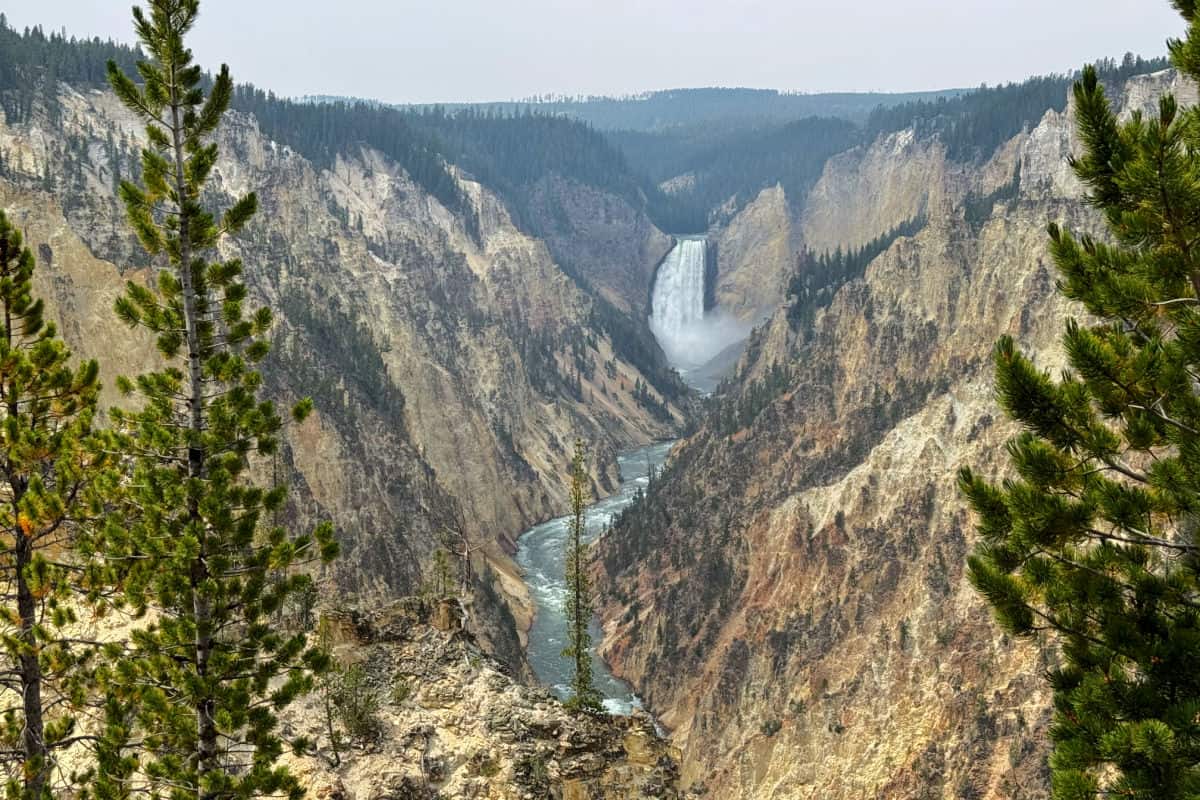
Yellowstone Day Pack Packing List
Here's what to pack with you for a day of exploring. We used small hiking backpacks to carry everything.
- Refillable water bottles
- Small hiking backpacks
- First Aid kit
- Flashlight
- Binoculars
- Swiss Army knife or multitool
- Non-perishable snacks (trail mix)
- Hat
- Sunglasses
- Sunscreen
- Bug spray
- Wet wipes
- Travel-sized toilet paper
- Extra layer (packable jacket, hoodie, etc.)
- Poncho
- Bear spray (can rent at all airports)
- National park pass
- Maps/travel guides/itineraries
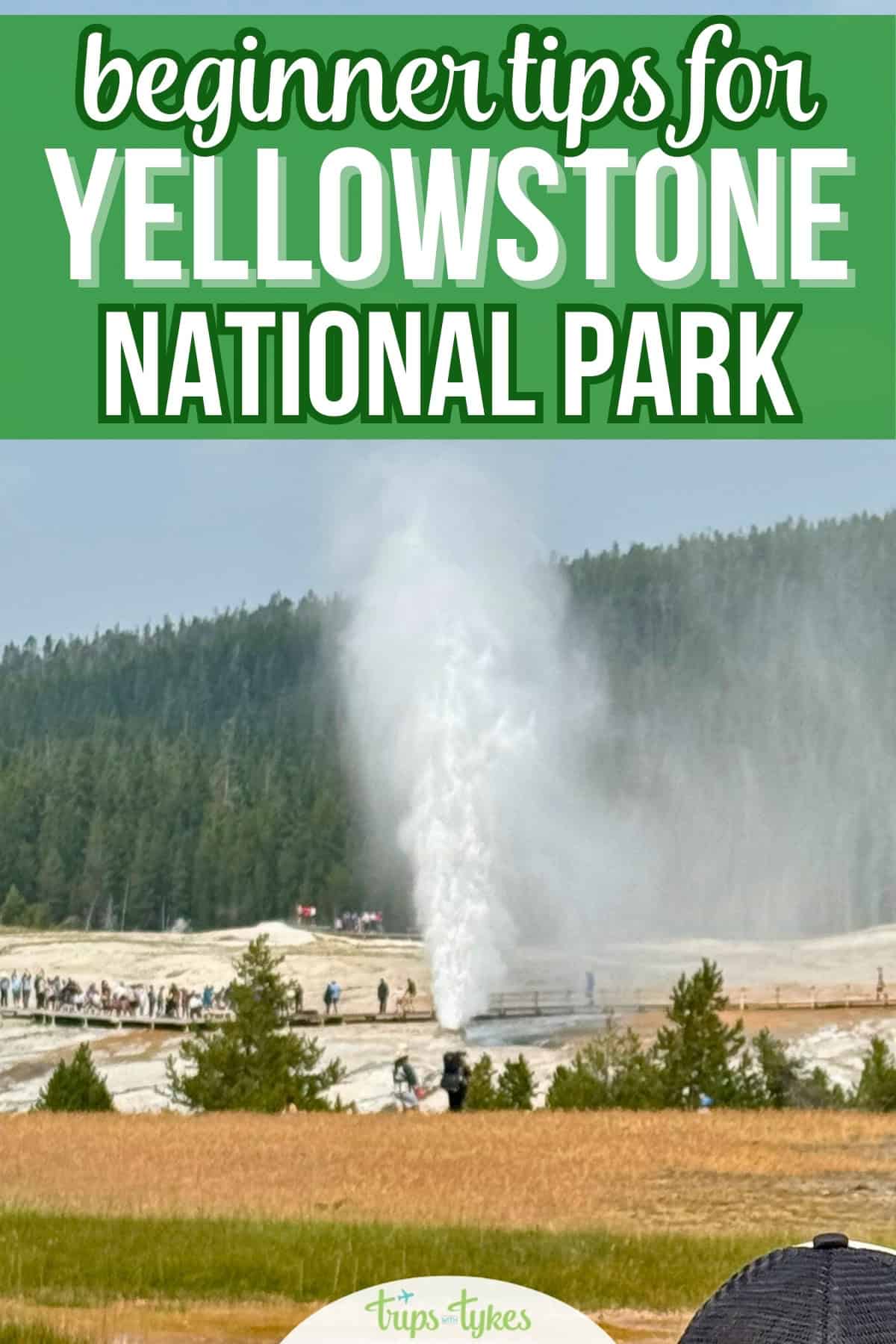





Leave a Reply